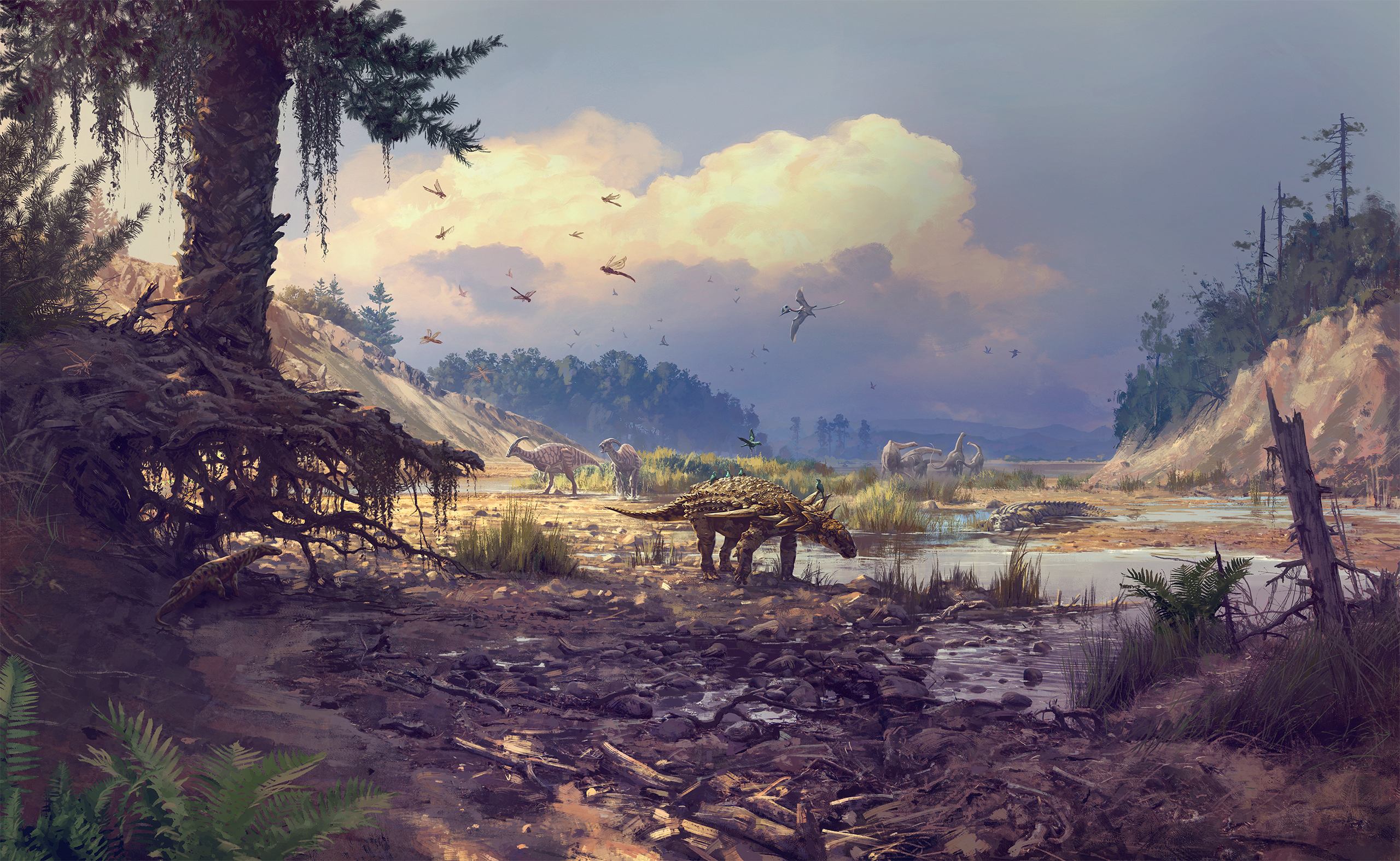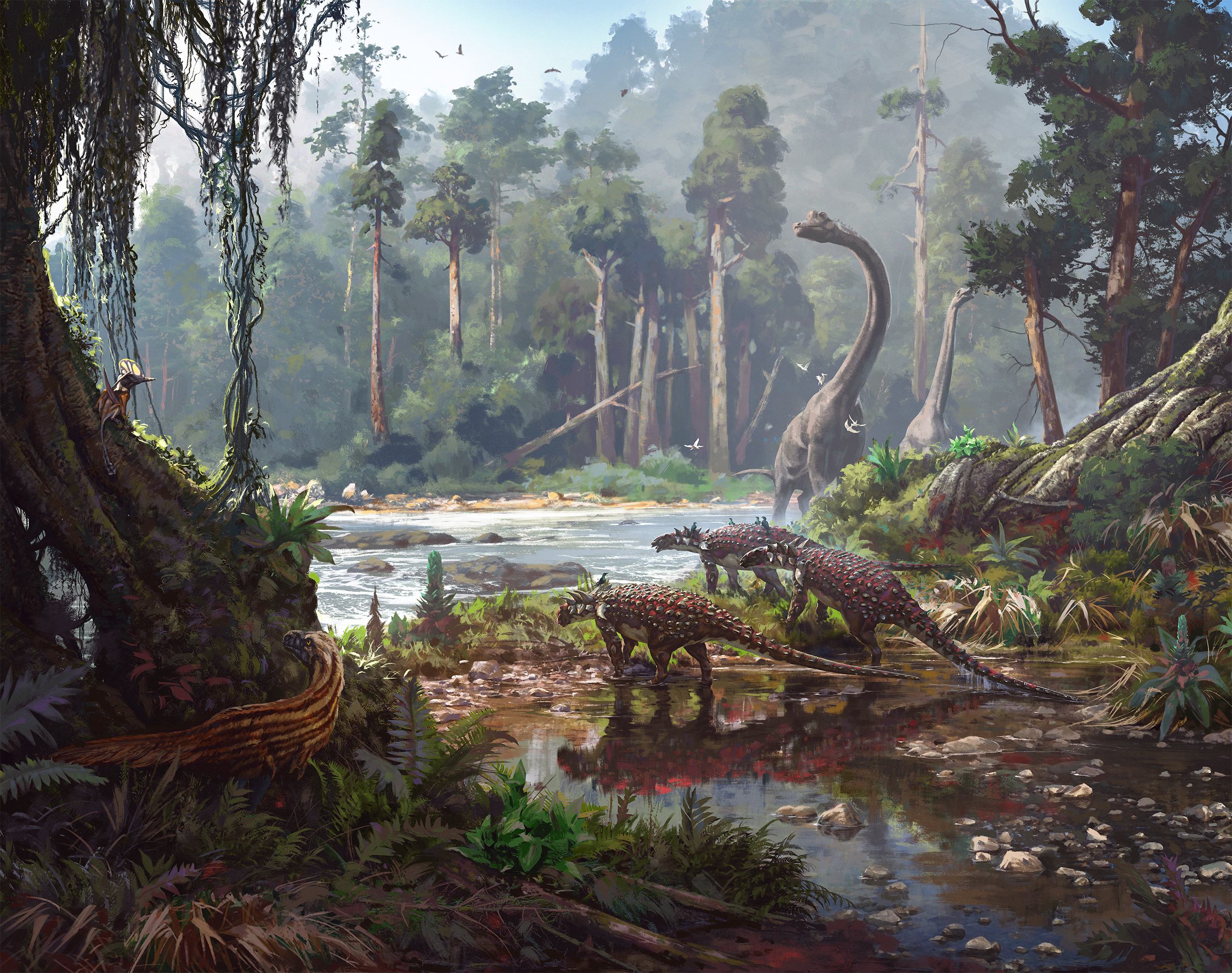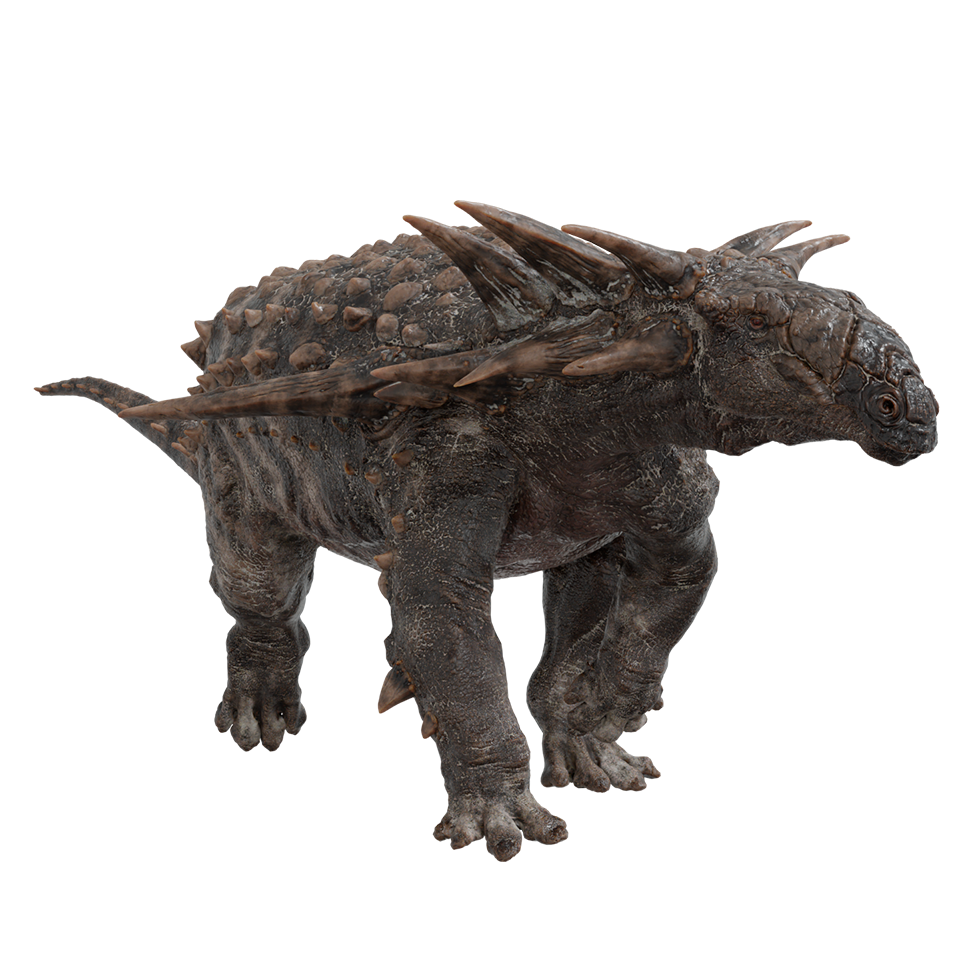Wyoming's Super-Spiked Ankylosaur
Like other ankylosaurs, this variety from the Early Cretaceous was heavily armored, but what set it apart from the rest were its prominent neck spikes and enormous shoulder spikes, likely used to deter predators such as Acrocanthosaurus!
Overview: The Cloverly Formation of Early Cretaceous Montana and Wyoming was home to one of the most prominently spiked of all the ankylosaurs, Sauropelta. Like its kin, this relatively small nodosaurid ankylosaur was covered in boney armored plates called osteoderms, and had several prominent spikes protecting its neck, along with an enormous spike over each shoulder, making it in a sense the ankylosaurs’ answer to the stegosaurs’ Gigantspinosaurus. Sauropelta’s armor and spikes probably helped defend it from predators like the dromaeosaur Deinonychus and the giant carcharodontosaur Acrocanthosaurus.
Discovery: The holotype (original) specimen of Saurolopelta, AMNH 3032, a partial skeleton, was discovered in the 1930s in rocks of the Cloverly Formation of Montana dating to about 108.5 million years ago during the Early Cretaceous. Brown recovered additional material in the form of AMNH 3035, which preserves the cervical (neck) armor and most of the skull, and AMNH 3036, which is one of the best-preserved nodosaurid skeletons known to paleontology and includes most of the armor preserved in situ. In the 1960s, John Ostrom collected additional specimens, and in 1970 he gave Sauropelta its name, which is Greek, meaning “lizard shield” (“sauros”=”lizard”; “pelte”=”shield'). Footprints thought to belong to Sauropelta have been discovered in British Columbia and Alberta identified under the ichnogenus and ichnospecies (name for a trace fossil) Tetrapodosaurus borealis.
Evolution and Description: Sauropelta was an ankylosaur in the family nodosauridae, which were at their peak during the Early Cretaceous. It had a basic ankylosaur build: quadrupedal, “tanky”, relatively short legs, rotund body, small head with a beaked mouth and leaf shaped teeth, and a protective covering of boney armored plates in the skin called osteoderms. It was small for an ankylosaur, 5–6 meters (16–20 ft) long, half of which was its notably long tail, and it weighed 1.5–2 tonnes (1.7–2.2 tons). Its tail was stiffened by ossified tendons, but unlike ankylosaurids, Sauropelta and its nodosaurid kin lacked a tail club. Like other nodosaurids, the osteoderms over the hips of Sauropelta were fused into a single plate called a “sacral shield”. The cervical armor consisted of two rows of spikes on each side of the neck, which increased in size toward the shoulders. The upper rows pointed up and backwards, while the parallel lower rows pointed backwards and outwards to the sides. Over each shoulder was an especially long spike. A row of small spikes ran down each flank of the animal toward the tail.

Ecology: The armor and spikes were probably defensive and may have helped keep Sauropelta safe from the primary predators of the Cloverly Formation, the 10 ft dromaeosaur (“raptor”) Deinonychus, known for its killing claws and penchant for hunting prey larger than itself, and the giant (36-37 ft) cacharodontosaur Acrocanthosaurus, apex predator of the region. The environment of the Cloverly was warm and lush, with abundant rivers and floodplains, much of which was probably covered in conifer forest. Titanosaur sauropods would have browsed on the trees, while Sauropelta fed lower to the ground along with ornithopods like the large Tenontosaurus and the smaller Zephyrosaurus. Sauropelta may have fed on low growing conifers and cycads. Its relatively narrow snout indicates that it was probably a selective low browser rather than a bulk-feeding grazer.

Extinction and Legacy: Sauropelta lived in the Cloverly Formation about 108.5 million years ago during the Albian age of the Early Cretaceous. The Cloverly Formation was situated in the interior of North America. As the young Rocky Mountains began forming in the west, the interior of the continent began to be pushed down, creating a basin. By the end of the Albian age, about 100 million years ago, the basin had been flooded by the sea, and Western Interior Seaway had formed, connecting the Gulf of Mexico to the Arctic Ocean and splitting North America into a western half (Laramidia) and an eastern half (Appalachia). Sauropelta probably went extinct as its environment slowly became flooded by the newly forming seaway. Today, Sauropelta can be seen at the American Museum of Natural History in New York City, New York, USA.
Sauropelta FAQ
Sauropelta size / How big was Sauropelta?
See height, weight, and length.
Sauropelta height / How tall was Sauropelta?
Sauropelta was around 1.5 meter (4.92 ft) tall.
Sauropelta weight / How much did Sauropelta weigh?
Sauropelta weighed about 1.5–2 tonnes (1.7–2.2 US tons)!
How long was Sauropelta?
Sauropelta was about 5–6 meters (16–20 ft) long!
What did Sauropelta eat?
Sauropelta ate low-growing plants, and it was probably fairly selective in which plants or parts of plants it ate.
What is Sauropelta closest living relative?
Like all dinosaurs, the closest relatives of Sauropelta are the only surviving lineage of dinosaurs today, the birds. Crocodilians, while not dinosaurs themselves, are also more distant cousins of dinosaurs.
Sauropelta family members / Sauropelta family / What kind of dinosaur was Sauropelta?
Sauropelta was an ornithischian (“bird-hipped dinosaur”) in the clade Ankylosauria (armored dinosaurs) and the family Nodosauridae (armored dinosaurs with without tail clubs), making it a distant cousin of the larger and more famous Ankylosaurus of the Late Cretaceous.
Where did Sauropelta live? / Where was Sauropelta found?
Sauropelta lived in what is now Montana and Wyoming.
When did Sauropelta live?
Sauropelta lived about 108.5 million years ago during the Early Cretaceous Period.
What does Sauropelta mean? / Sauropelta name meaning
Sauropelta means “lizard shield”.

